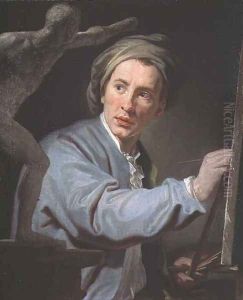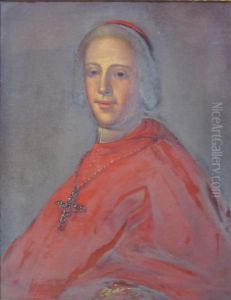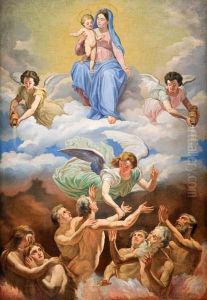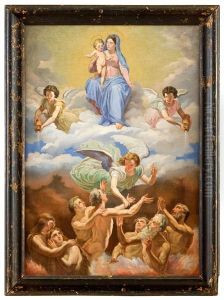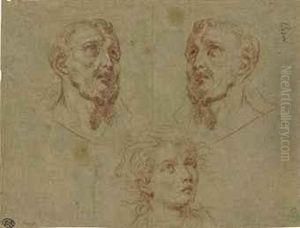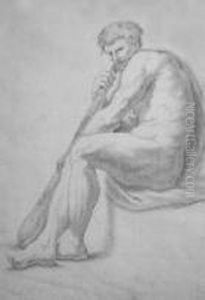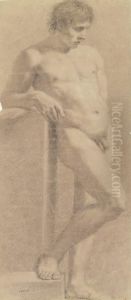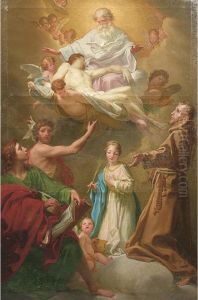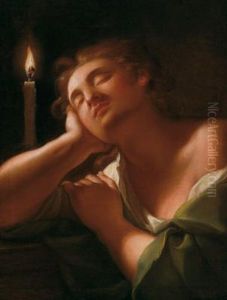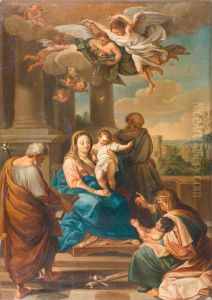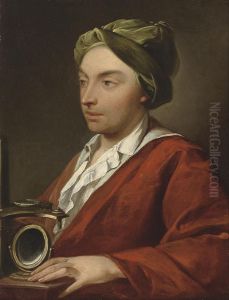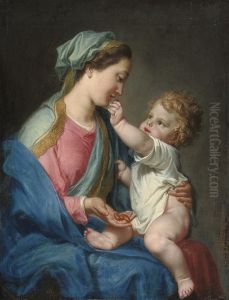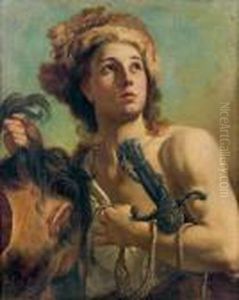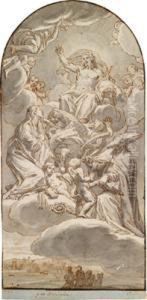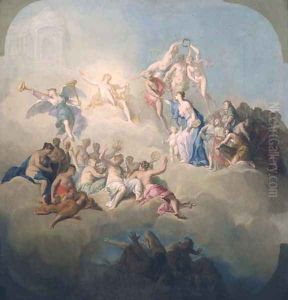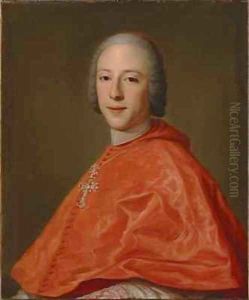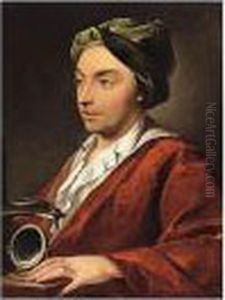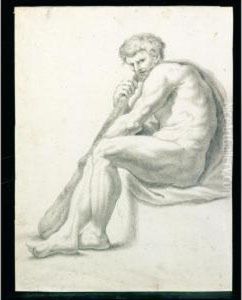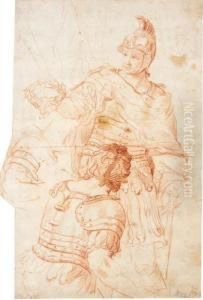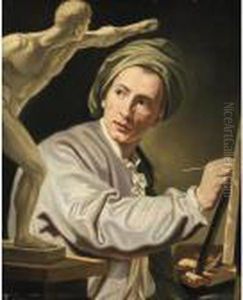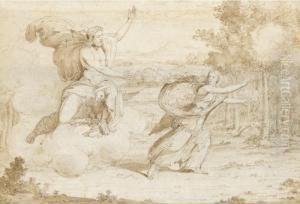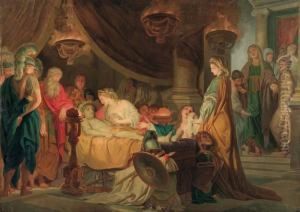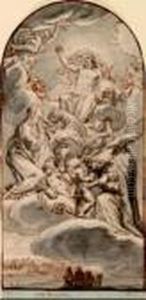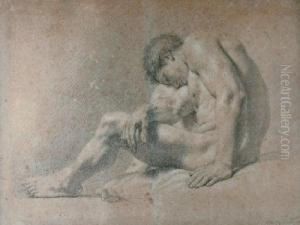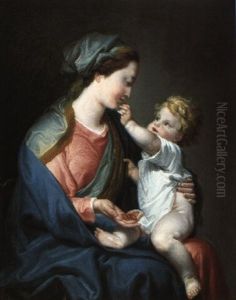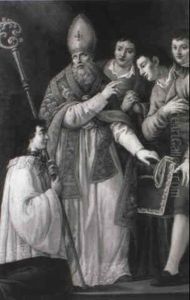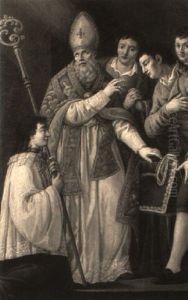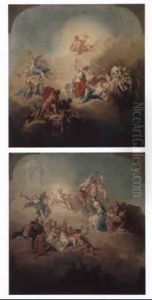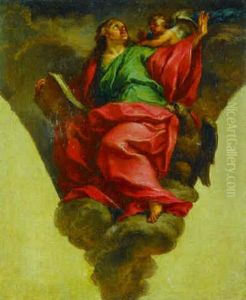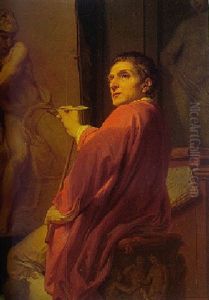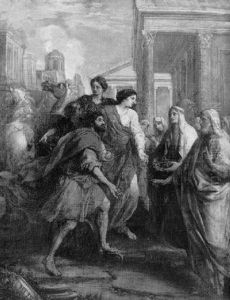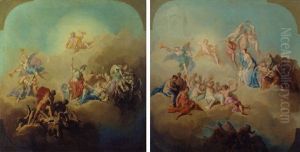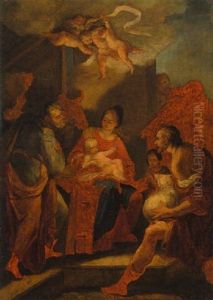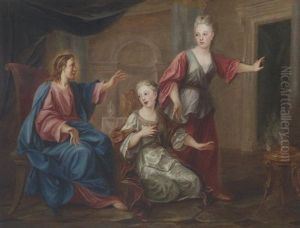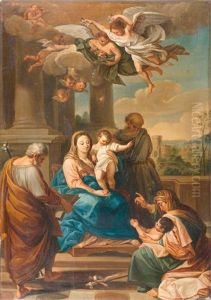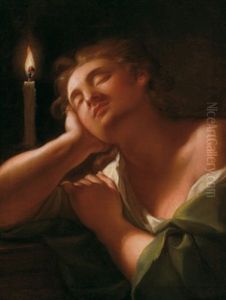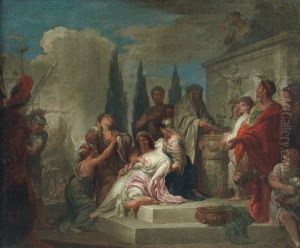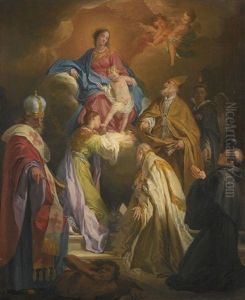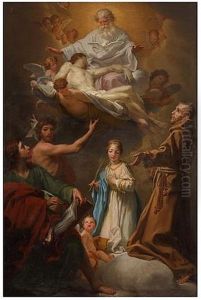Domenico Corvi Paintings
Domenico Corvi was an Italian painter of the Rococo and Neoclassical periods, born on April 9, 1721, in Viterbo, a city in central Italy. He was initially trained by his father, who was a minor painter, before moving to Rome to study under the guidance of Francesco Mancini. Corvi's early work was influenced by the Baroque style, which was prevalent during his formative years, but as his career progressed, he embraced the new Neoclassical ideals that were sweeping through Europe in the second half of the 18th century.
His education was furthered in the environment of the Accademia di San Luca in Rome, where he had the opportunity to study the works of the great masters of the past, as well as contemporary art. Corvi's talent and skill soon earned him a reputation as a fine draftsman and a painter of historical and mythological subjects. He also became known for his frescoes, which adorned various churches and palaces in Rome and other Italian cities.
Among his notable works are the ceiling frescoes in the Palazzo Borghese in Rome and the ‘Madonna del Rosario’ in San Silvestro in Capite, also in Rome. His style is characterized by a graceful use of line and a subdued palette, which was in keeping with the aesthetic ideals of the time. Corvi was also an accomplished portrait artist, and his portraits are appreciated for their psychological depth and realism.
As Neoclassicism became the dominant style, Corvi continued to evolve, integrating the clean lines and classical subject matter of this movement into his work. His later works exhibit a mature grasp of Neoclassical principles, with a particular emphasis on harmony, balance, and restraint.
Domenico Corvi's career was not only limited to painting; he also held a number of prestigious positions throughout his life, including the directorship of the Accademia di San Luca from 1784 to 1788. His influence on the Italian art scene was significant, and he trained a number of students who would go on to become successful artists in their own right.
Corvi's contributions to Italian art were recognized in his lifetime, and today he is remembered as an important transitional figure between the Baroque and Neoclassical styles. He passed away on January 21, 1803, in Rome, leaving behind a body of work that continues to be studied and admired for its elegance and historical value.
